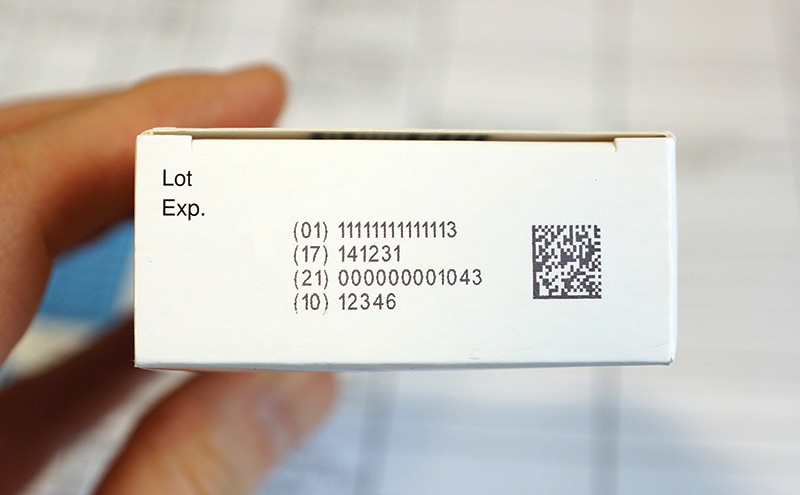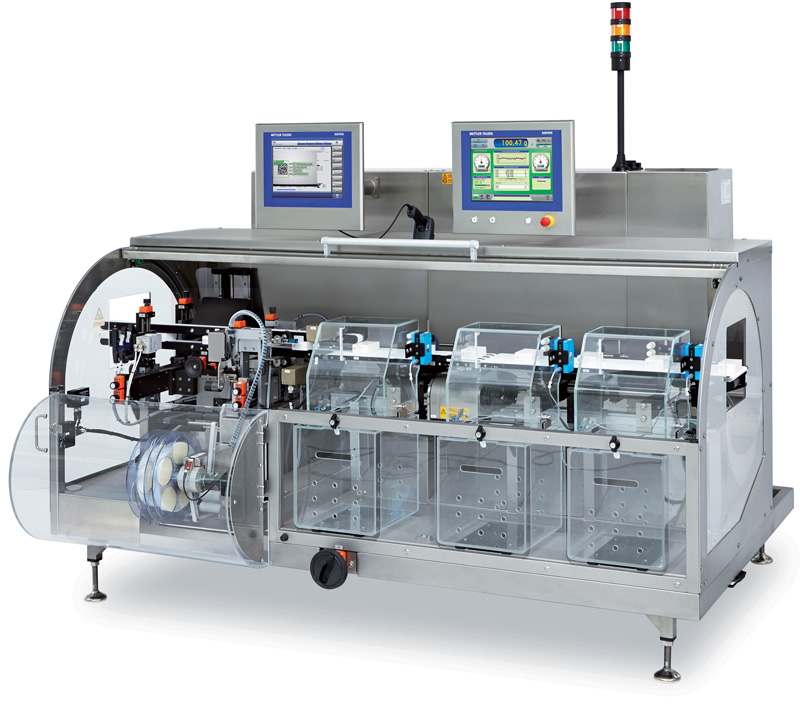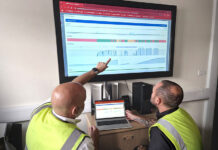
Reinhold Van Ackeren, head of marketing & product management, Mettler-Toledo PCE, explains how new product inspection technology can help prevent pharmaceutical product counterfeiting
COUNTERFEIT medicines are a growing problem throughout many parts of the world. According to the World Health Organisation (WHO), counterfeit drugs make up between seven and 15% of all medicines circulated in developed countries.
The problem is worse in developing countries, with nearly 25% of all medicines likely to be counterfeit. In addition, the amount of counterfeit pharmaceutical products sold online has increased significantly, with little to no regulation.
Taking advantage of available technology, counterfeiting operations are becoming increasing sophisticated. In some cases, counterfeiters are using almost identical packaging systems as original manufacturers.
This presents some very serious problems, beginning with the potential impact on consumer safety due to harmful or ineffective ingredients.
Counterfeit drugs can also have a significant effect on bottom lines, damaging brand reputation and decreasing pharmaceutical manufacturers’ profits.
The good news is that a number of new regulations are being implemented across Europe, Asia and North America to combat the issue of counterfeit drugs throughout the supply chain.
The authorities in Europe, Asia and North America are making serialisation mandatory. These regulations will optimise the traceability of products, facilitating the identification of counterfeit products in the supply chain by retailers and the authorities, ensuring consumer safety and protecting the integrity of pharmaceutical manufacturers’ valuable brands.
The implementation of serialisation solutions on the pharmaceutical production line is no longer optional, but the question is: how do manufacturers ensure compliance with these new regulations? For starters, it is important to stay ahead of the curve on the latest serialisation requirements, either in effect or coming online across key regions, such as Europe, Asia and North America.
Manufacturers must then familiarise themselves with the latest technological advances that meet their production needs while achieving global serialisation compliance.
REGIONAL REGULATIONS
Serialisation is becoming a strict requirement worldwide and in order to do business in key global markets, pharmaceutical manufacturers must be in compliance with legislation that differs from region to region.
EUROPE
The European Union (EU) has approached the use of serialisation to prevent counterfeit drugs, introducing the Falsified Medicines Directive (FMD).
Serialisation aimed at manufacturers of pharmaceutical products, including amended package design, will come into effect in 2018. After this, no product under the FMD can be sold in Europe without a serial number. Requirements include barcodes printed on pharmaceutical product packaging that is then checked into a database by the manufacturer.

ASIA
China’s Food and Drug Administration (CFDA) has mandated that all pharmaceutical products require serialisation and compliance reporting, while the South Korean Ministry of Food and Drug Safety (MFDS) requires serialisation and serialised product reporting for all pharmaceutical products, which came into effect in January 2016.
In India, serialisation is only currently required for products being exported. However, there is now a draft regulation where in the future serialisation and aggregation may be required across all packaging levels, starting from primary packaging. This means that in India, blister packs may also have to contain appropriate coding.

NORTH AMERICA
In the United States, by November 2017 the Drug Supply Chain Security Act (DSCSA) will require that specific product information be provided on product packaging, including National Drug Code (NDC) or Global Trade Identification Number (GTIN), serial number, lot number and expiration date.
By 2023, the DSCSA will include complete interconnectivity, meaning shared ownership of data between all supply chain partners – from manufacturers, wholesale drug distributors and re-packagers, to dispensers, such as pharmacies – allowing for full real-time traceability of pharmaceutical products back to their origins. With integrated coding, serialisation and track and trace solutions across the entire supply chain, this will provide what is known as ‘cradle to grave’ traceability.
SERIALISATION TECHNOLOGY
As new laws are adopted throughout the world, the pharmaceutical industry must incorporate serialisation into production in order to ensure compliance.
Serialisation systems typically consist of several elements, including printers and visual inspection systems. For the pharmaceutical industry, this equipment must be fine-tuned to meet specific needs such as high production line speeds and throughput.
Advanced technology now allows for the integration of complex serialisation system components that can meet both the performance needs of pharmaceutical manufacturers, as well as global regulatory requirements.
Leading product inspection technology companies have developed rapid and accurate serialisation solutions designed to have minimal impact on manufacturing processes through innovative component integration.
For example, Mettler-Toledo’s XMV family of solutions allows for marking and verification system components – including ink jet printing systems, high-resolution visual verification systems, mechanical transfer units and rejecting devices – to be combined into one unit that can be efficiently added to existing or new production lines.
Unifying these various elements into one solution significantly reduces costs and streamlines operations.
This system minimises the risk of product counterfeiting by laying the foundation for tracking and tracing products via serial numbers. This enables downstream devices and systems to closely monitor a package through its custody chain, meeting regulatory track and trace requirements.
Another extension of the scalable XMV system platform that is designed especially for the pharmaceutical industry is the Mettler-Toledo Garvens’ Checkweigher Combination XS2 MV, which brings fraud prevention and quality control together by joining various production line functions, such as dynamic checkweighing, completeness check, detecting askew packages and open flaps, marking, verification, precision product handling and reliable sorting/rejecting.
In addition to precisely capturing weights, this complete system prints product codes using laser marking or inkjet printing systems, that are then verified for accuracy and legibility, serving as a key part of an overall track and trace program for compliance purposes.
A key driver for using tamper evident seals in the production line is the strong demand for consumer product safety. By using such a solution, pharmaceutical manufacturers are able to prove easily that their products are not counterfeit.
Solutions are now available to a high degree of operational flexibility, offering over 375 standard configurations to facilitate multiple product selection. All components have been finely tuned to work in perfect unison, even at extremely high speeds (up to 90 m/min), thereby combating counterfeit medicine products.
Counterfeiting is one of the most serious issues facing the pharmaceutical industry today. In some countries, nearly one-quarter of all medicines may be counterfeit. Due to their very nature, these products can pose serious consumer safety issues, as well as cause irreparable damage to hard-won brand reputations.
Taking this threat very seriously, nations around the world have taken active steps to protect the consumer and strengthen the pharmaceutical supply chain, making product serialisation mandatory. As a result, pharmaceutical manufacturers must gain a firm understanding of the serialisation requirements necessary to do business in various parts of the world.
With that knowledge, they can then specify the best serialisation solution for their production lines. Advances in serialisation technology have yielded equipment that combine inspection, marking and vision technology into a system that can be efficiently integrated into the production process without slowing throughput.
With this technology in place, pharmaceutical manufacturers can ensure regulatory compliance and prevent counterfeit product from entering the supply chain, protecting consumer safety and the integrity of their brands.












